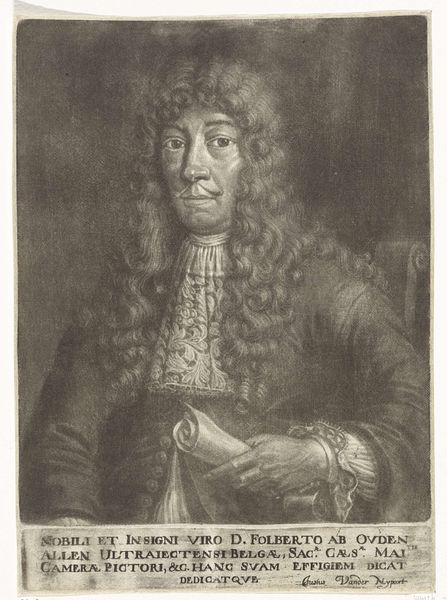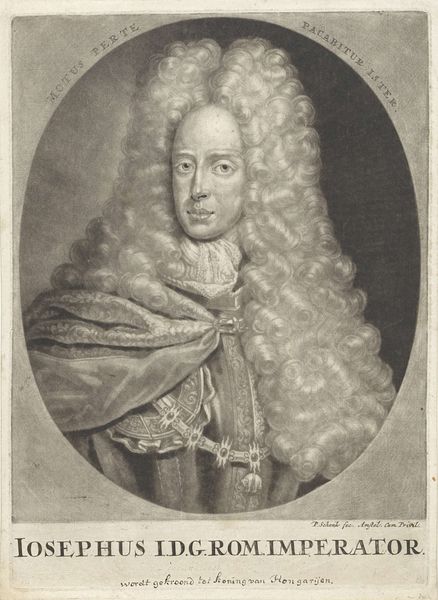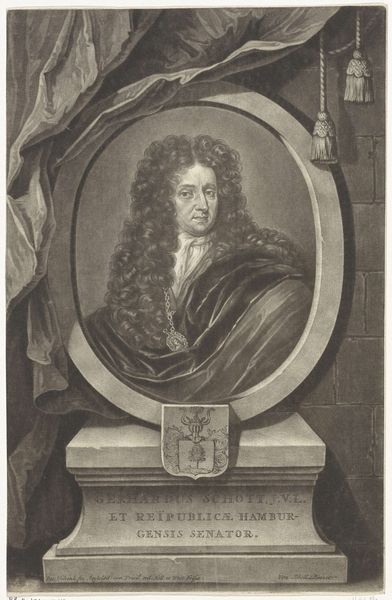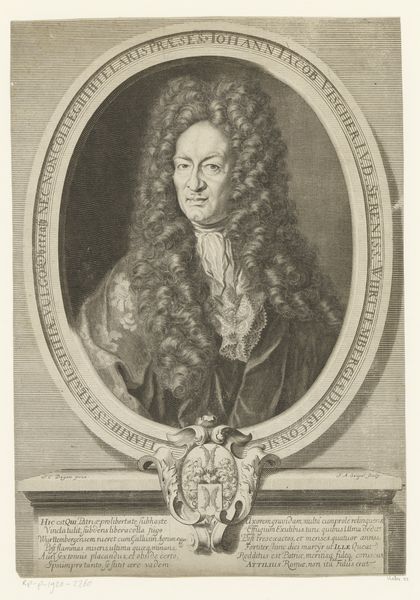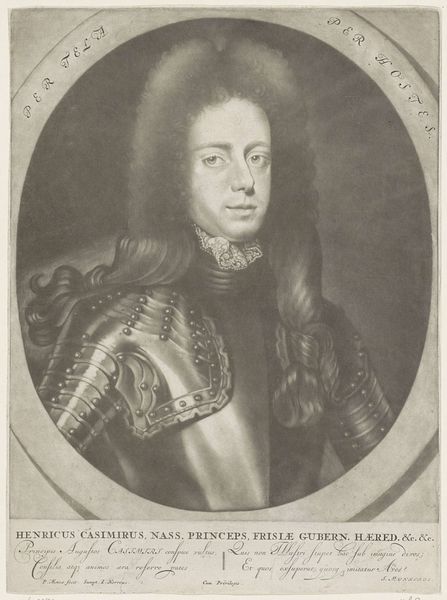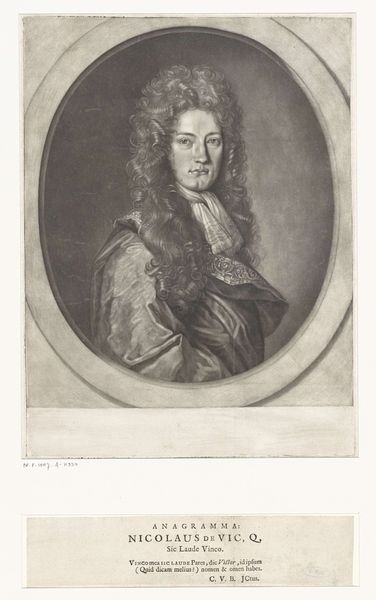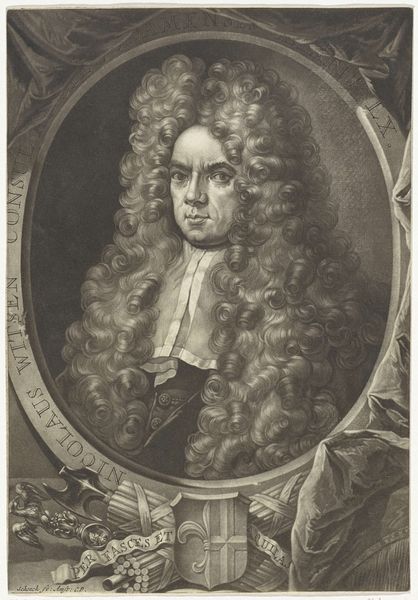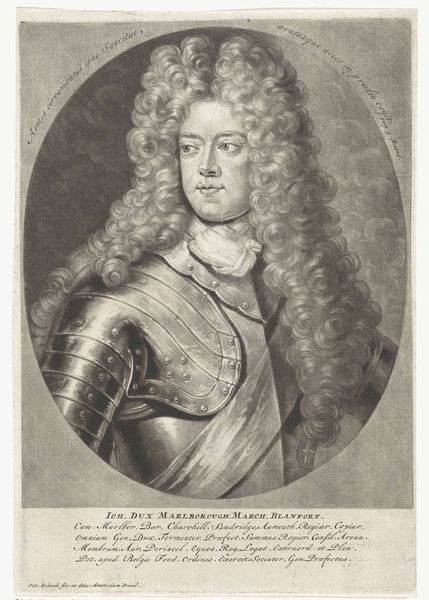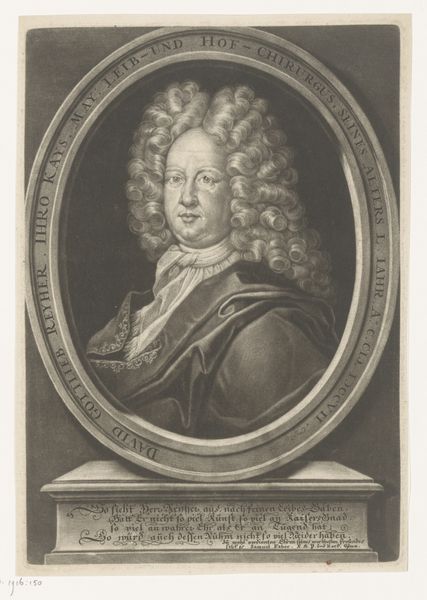
print, engraving
#
portrait
#
baroque
# print
#
figuration
#
line
#
portrait drawing
#
history-painting
#
engraving
Dimensions: height 248 mm, width 184 mm
Copyright: Rijks Museum: Open Domain
Curator: This is "Portret van Nicolaus Christoph Lunker," made sometime between 1670 and 1713 by Pieter Schenk. It’s currently housed here at the Rijksmuseum. Made using engraving, a printmaking technique...what strikes you about this image? Editor: The meticulous detail! I'm captivated by the hair; it has an almost… electric energy about it. But overall, I get a sense of reserved formality. What's your take on it? Curator: Reserved formality indeed. It's that Baroque dance between extravagance and control, isn't it? Think of the powdered wigs, lace, and imposing expressions. It’s like the artist is saying, “Yes, I am powerful and wealthy, but also refined and considered.” Schenk's really emphasizing Lunker's status. How does the fact that this is a print – something reproducible – change how we think about its message? Editor: Hmm, interesting. Does the printing technique, making the image reproducible, suggest the artist wanted to circulate the sitter’s image widely, to promote his status and influence perhaps? Almost like early public relations? Curator: Exactly! It suggests an intentionality of spreading his image and projecting power, which aligns beautifully with Baroque sensibilities. Though the portrait is full of pomp, it gives one something to think about in regards to celebrity today. Editor: I never would have considered it from that angle. This conversation has helped me appreciate the many layers of meaning in even what appears to be a simple portrait. Curator: And for me, it highlights how even seemingly antiquated forms like engraved portraits speak volumes about timeless human desires like influence and legacy. A fascinating dialogue, indeed!
Comments
No comments
Be the first to comment and join the conversation on the ultimate creative platform.
